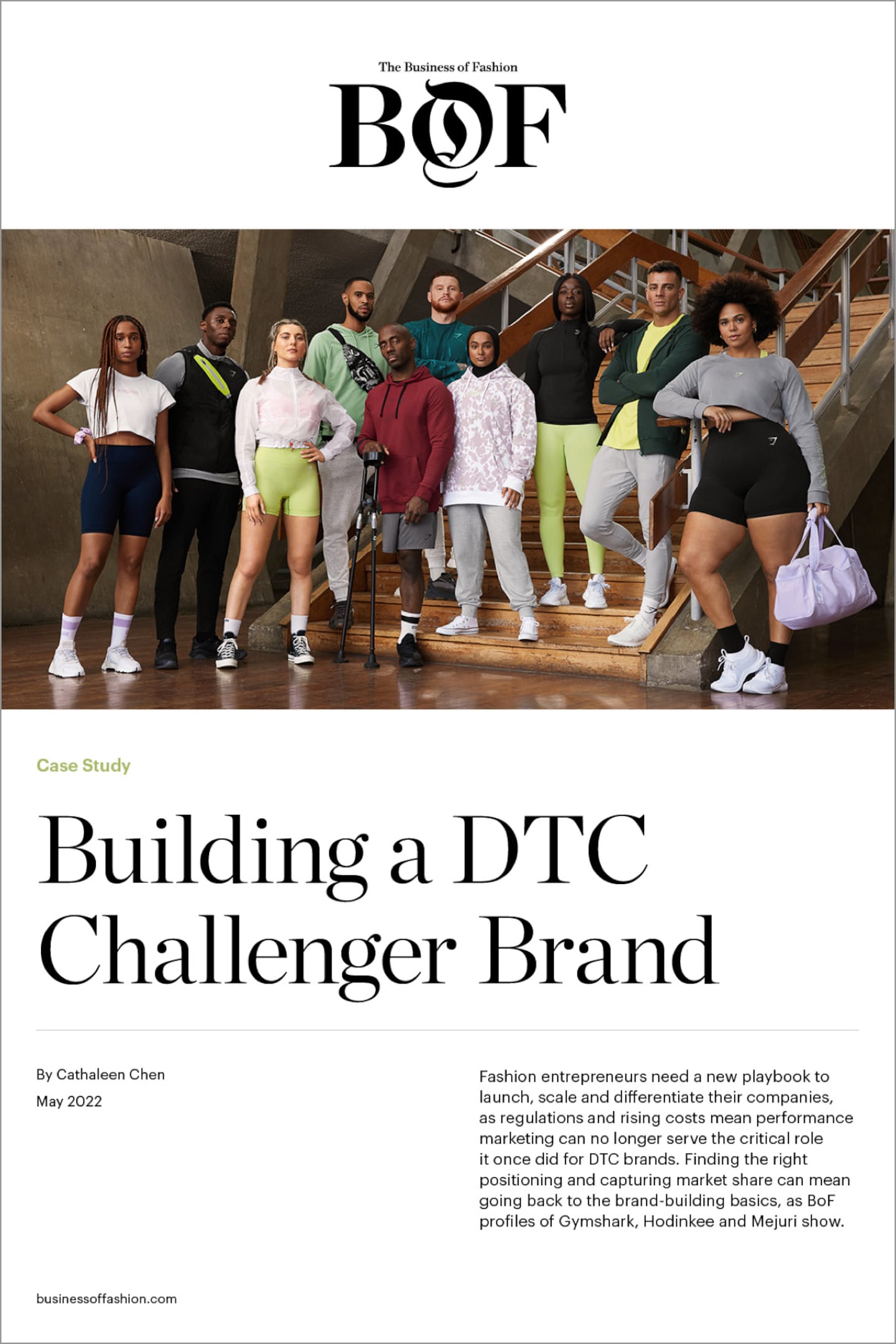
The Business of Fashion
Agenda-setting intelligence, analysis and advice for the global fashion community.

Agenda-setting intelligence, analysis and advice for the global fashion community.

For its first decade or so, watch publication and retailer Hodinkee did not have a marketing budget, let alone a chief marketing officer. In fact, unlike many other online brands that launched in the 2010s, Hodinkee never once paid for online ads, or deployed any of the other traditional tactics in the direct-to-consumer trade.
The company, founded in 2008 as a website about watches, cultivated an intensely loyal readership among timepiece enthusiasts. As followers grew, the company looked to e-commerce, gradually building a retail segment selling luxury watches from brands like Omega and Zodiac. It wasn’t until Hodinkee was ready to scale beyond its niche that it hired its first chief marketing officer, Carlos Rivera-Anaya, in April 2021.
In that same month, the field of digital marketing was dealt a tough blow. Apple introduced an update to its mobile operating system that prohibited apps from tracking user behaviour without getting permission from users first. Suddenly, the ability of brands to target customers with advertising that matches their interests was severely curtailed.
Meanwhile, a number of other hurdles that make collecting customer information more difficult for marketers have also emerged, including Google’s commitment to ban browser cookies and the European Union’s continued rollout of the General Data Protection Regulation. All of this means that digital ads are not only less effective than they were five or so years ago, but much more expensive too.
ADVERTISEMENT
Not all brands were affected equally. With Hodinkee, Rivera-Anaya was joining a direct-to-consumer company whose foundation was built without the need for third-party customer data to drive sales. Essentially, he was starting with a blank slate as he helped move Hodinkee into the world of paid marketing, albeit in a “very conservative” way, he said.
Like the other digitally native companies showcased in this case study — jewellery start-up Mejuri and activewear brand Gymshark — Hodinkee shows how it is possible to eschew the performance marketing strategies in the early stages of building an online company, in sharp contrast to a wave of direct-to-consumer brands that mostly or wholly relied on paid advertising to attract customers and grow. Instead, the three companies scaled by organically building their reputations as brands that aim to shake up the status quo in their respective categories and encouraged word-of-mouth marketing.
Each has grown into a $100 million-plus brand by going back to the basics of brand building, while breaking the rules of their industries and creating novel value propositions for consumers. In some ways, these companies have developed a positioning as “Challenger brands,” a term that strategist Adam Morgan coined in his seminal 1999 book, “Eating the Big Fish: How Challenger Brands Can Compete Against Brand Leaders.” While Morgan’s book is more than 20 years old, its themes could not be more relevant today as direct-to-consumer brands grapple with the dramatic changes in the marketing landscape that influence how brands can launch and scale.
“A lot of brands today are realising they have to go back to old-fashioned brand-building,” said Quynh Mai, founder and chief executive of digital agency Moving Image & Content.
The three companies have forged reputations as challengers in their respective markets by refusing to follow conventions. Mejuri put its own spin on fine jewellery by marketing products to women who want to buy something nice for themselves rather than wait for their partners to do so. Gymshark took on much larger activewear brands by celebrating the everyday gym-goer rather than elite athletes, creating a sense of community among its strength-training enthusiasts. Hodinkee stood apart from traditional men’s fashion media with its super specialised content, highlighting the power of catering to niche interests.
By unpacking their growth trajectories, this case study identifies four insights from which all brands can benefit: the ideal size of a start-up marketing budget; how to better understand customer profiles; the importance of being niche and focused; and why breaking the rules can be a critical step in finding the right market position.
Editor’s Note: This case study was amended on May 27, 2022, to clarify Mejuri’s launch year.
The DTC bust of the past two years has casted a cloud on the sector, but emerging fashion brands with a better handle on supply, demand and customer retention are seeing profitable growth.
In London, where independent labels have been hit hard by the implosion of key stockist Matches, brands like Clio Peppiatt, Marfa Stance and Completedworks have grown direct-to-consumer businesses that peers can learn from.
Apparel start-ups founded on the promise of offering men the perfect T-shirt are proving resilient in an otherwise dreary DTC sector rampant with fire sales, bankruptcies and steep revenue declines.
Apparel brands Knot Standard and Billy Reid are teaming up in a move investors say we may see more of as fashion start-ups seek alternative funding routes to grow their businesses.